Inflation and northern floods that have devastated this year’s harvest in India, the world’s most populous country, and sent prices of almost every part of a meal to record highs.
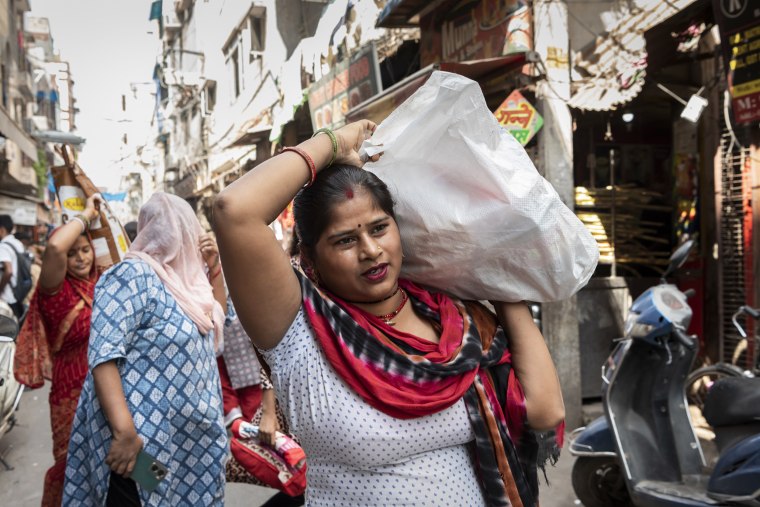
Inflation and northern floods that have devastated this year’s harvest in India, the world’s most populous country, have sent prices of almost every part of a meal to record highs. During the summer, tomatoes went from 20 rupees (25 cents) to as much as 100 rupees ($1.25), while onions rose from 30 rupees (35 cents) to 180 rupees ($2.10), stretching families’ budgets to the maximum.
“We thought we would come here, make a living, build our home for our children. But we are not able to because of rising living costs,” said Raj Kumari, 30, a migrant worker whose family is one of about 80 that have lived for decades in a slum in the Majnu-ka-Tilla area of northwestern New Delhi.
“We think about taking one step forward in our life but end up taking one back, instead,” she said.
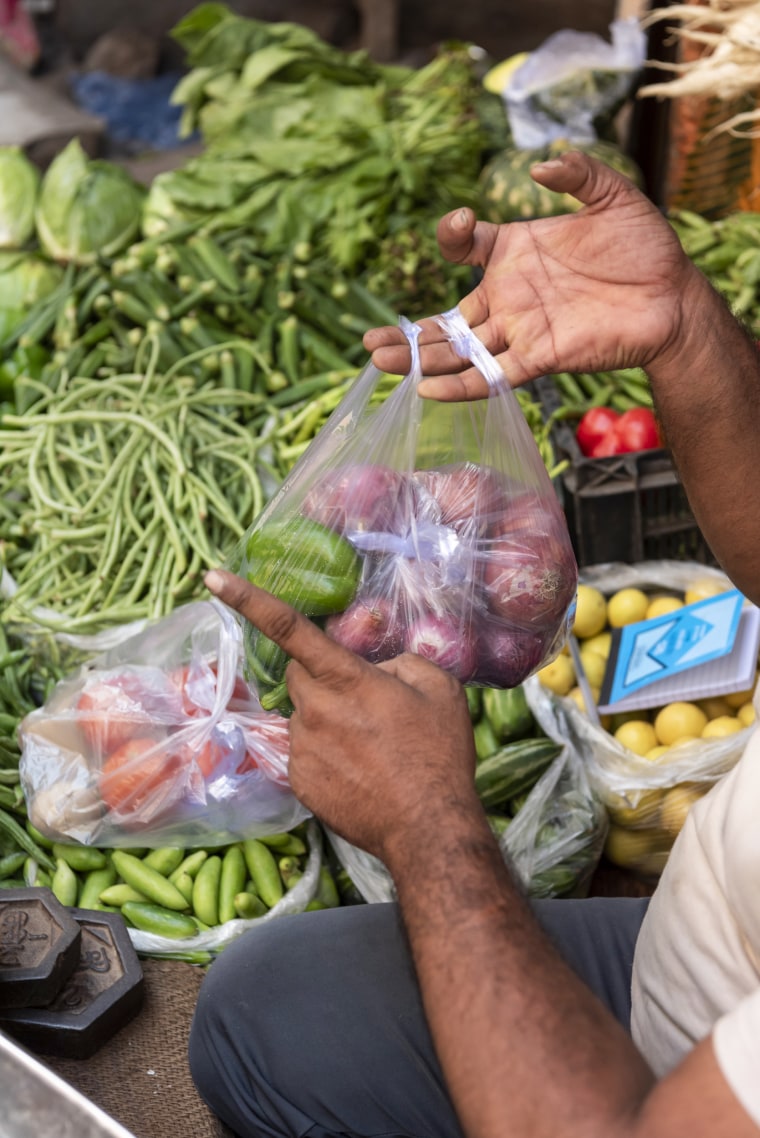
Food price inflation in July was 11.5%, a three-year high, forcing Prime Minister Narendra Modi to take strong measures to cool prices ahead of a national election next year in which he is expected to seek a third five-year term. The government has restricted exports of rice and onions and started importing tomatoes from neighboring Nepal, and it is selling some vegetables domestically at subsidized rates.
Soaring prices have led Kumari and her neighbors to make some hard choices when they plan their meals.
“It’s getting more expensive day by day, but we can’t stop eating altogether,” she said.

So, armed with a bag, Kumari headed out on a recent sweltering afternoon to a neighboring street market where the smell of cinnamon and other fresh spices wafted through the air.
She began going through the items on her shopping list, asking first about the price of cooking oil.
“130 a kilogram,” the shopkeeper replied, or more than $1.50 for a quarter-gallon, almost double what it cost a few years ago. Kumari limited herself to half a gallon, about half of what she would normally buy for two weeks or longer.
She then picked up a sack of flour — used to make roti, or flatbread — which cost 320 rupees ($3.85) for 10 kilograms, or about 22 pounds.
“It would cost around 250 two years ago,” Kumari said.
As poultry feed has also risen in price, she decided to skip her son’s favorite food, chicken, moving directly to the vegetable sellers.
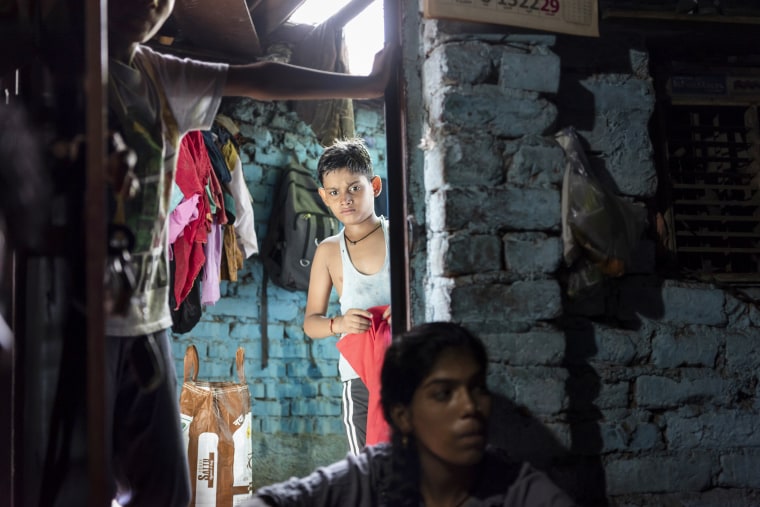
Experts say unusual rainfall, including deadly floods in the country’s northern regions, together with the effects of El Niño — a periodic natural warming in the Pacific Ocean that causes extreme weather around the world — have raised the prices of almost all groceries.
“Weather patterns have been very erratic. Some parts received a lot more rainfall than usual, while some got much less,” said an expert in Indian agriculture, Nilabja Ghosh, a professor at the Institute of Economic Growth in Delhi.
For perishable foods like tomatoes, “predictability is crucial,” she said.
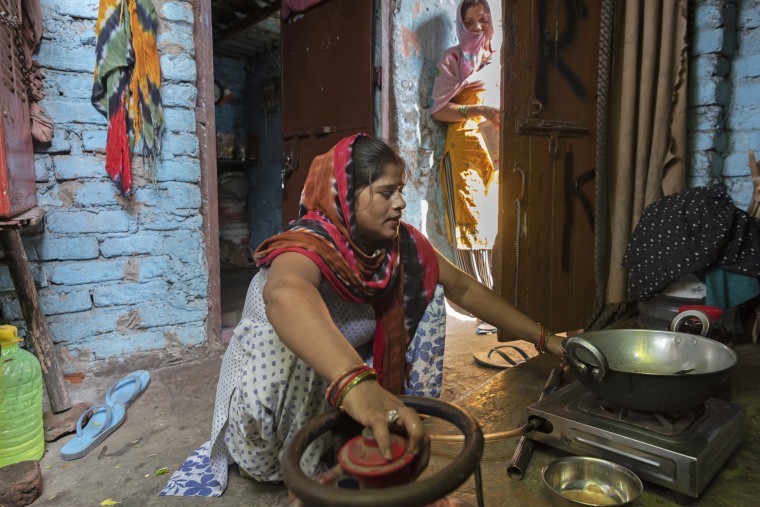
Careful cooking
Kumari and her husband, Santosh, who, like many slum residents, goes by only one name, moved to the capital from the neighboring state of Uttar Pradesh when their daughter was a few months old, hoping to find work. They live with their daughter, now 15, and their 12-year-old son in a 100-square-foot home with a tin roof.
In a good month, she and Santosh, 32, could earn a combined 25,000 rupees, or $300, well above the urban poverty line of about 1,200 rupees ($14.45), though far short of the ballooning cost of living for a family of four.
“We had so much work, we didn’t have time to sit,” Kumari said of their early years in Delhi, when it was developing at a rapid clip.
But her work as a day laborer has dwindled, and she has spent most of the last six months taking care of the family.
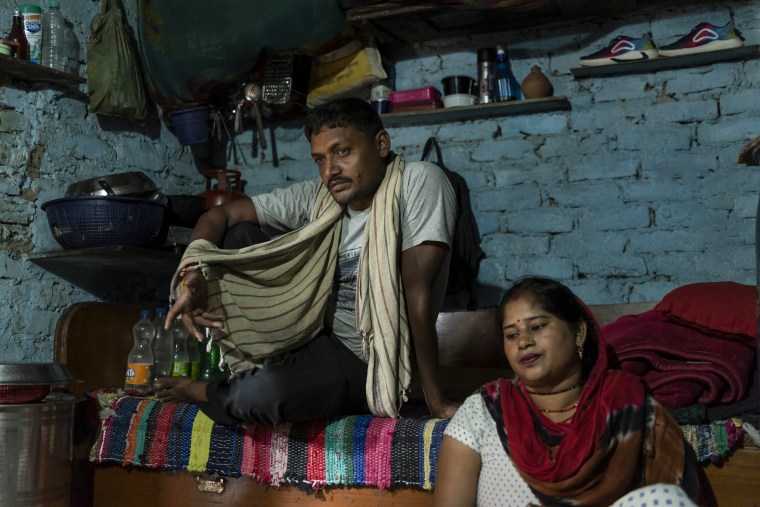
Low-income families like theirs receive about 33 pounds of wheat from the government every month, but that is enough to last only 10 days, leaving them at the mercy of the market for the rest of it.
“What can a poor family like ours do when we can’t even find work?” Kumari said.
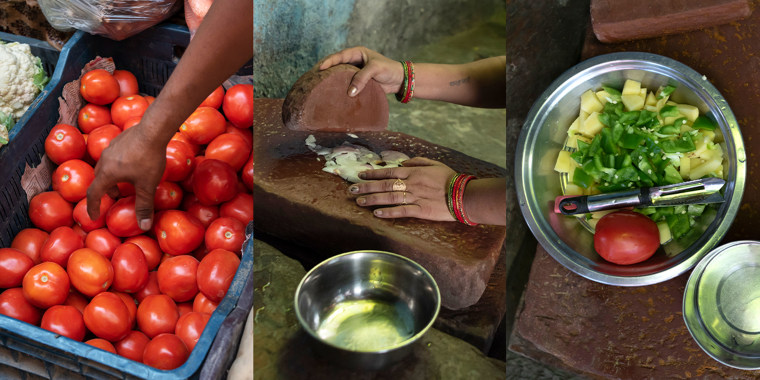
Kumari quickly diced one full onion and ground it on a stone slab. She then added a few drops of water and thoroughly mixed the onion with spices, such as cardamom, pepper, cilantro, chili and turmeric. Using another stone, she kneaded the mixture into a thick paste, dicing and adding two potatoes, one tomato and one big bell pepper.
She dropped a few tablespoons of oil into a pot, which instantly sizzled as she poured in the vegetables and spices, chili fumes quickly filling the air.
Just as Kumari finished, Rohit returned from Hindi class, slamming his bag on the floor and sitting down to eat his budget-friendly but meatless meal, which he would be eating again for dinner.

“They both eat one cauliflower each, which lasts them a day,” Kumari said. “My son is very keen to get one more, but I told him we can’t even fend for ourselves properly — how will we take care of one more?”
Source: NBC News









